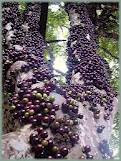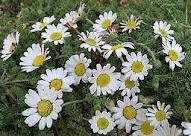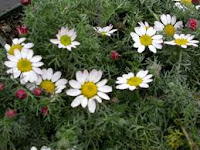In British English we say soya bean while in US English it’s a soybean, but they are the same thing. They originated in South-East Asia and were first domesticated in China Japan
The first European to describe and illustrate the plant was Engelbert Kaempfer, the German botanist, in his “Amoenitatum Exoticarum” published in Germany
 Shoyu was imported into
Shoyu was imported into The soy plant was grown in Botanical Gardens in France England
 Henry Ford had his scientists make strong durable plastic from soya beans and made a car entirely out of soya bean plastic. When the plant was first introduced into the American colonies by Europeans in 1765 it was called “Chinese vetches.” The soya bean has been one of the five main plant foods in China along with rice, wheat, rye, barley and millet for centuries, but the beans were fist exported to Europe only in 1908.Now soya oil is used for many purposes, in the form of flour it can be added to wheat flour and helps compensate for the lack of the amino acids, tryptophan and lysine in the grain flour. Sixty pounds or one bushel of the beans yields eleven pounds of oil and forty-eight of meal. The oil can be used as a green fuel and lubricant as well as for culinary purposes, while the lecithin extracted from the oil is a natural emulsifier and used to stabilize the ingredients of some food products, as it makes fat and water compatible, and can prevent cocoa butter and chocolate from separating for example. The oil is used in margarines, salad dressing and can be found in paints, varnishes and printers’ ink. The plants themselves have always been used as fodder for animals, so the whole plant is useful.
Henry Ford had his scientists make strong durable plastic from soya beans and made a car entirely out of soya bean plastic. When the plant was first introduced into the American colonies by Europeans in 1765 it was called “Chinese vetches.” The soya bean has been one of the five main plant foods in China along with rice, wheat, rye, barley and millet for centuries, but the beans were fist exported to Europe only in 1908.Now soya oil is used for many purposes, in the form of flour it can be added to wheat flour and helps compensate for the lack of the amino acids, tryptophan and lysine in the grain flour. Sixty pounds or one bushel of the beans yields eleven pounds of oil and forty-eight of meal. The oil can be used as a green fuel and lubricant as well as for culinary purposes, while the lecithin extracted from the oil is a natural emulsifier and used to stabilize the ingredients of some food products, as it makes fat and water compatible, and can prevent cocoa butter and chocolate from separating for example. The oil is used in margarines, salad dressing and can be found in paints, varnishes and printers’ ink. The plants themselves have always been used as fodder for animals, so the whole plant is useful. Soy beans in our diet have many health benefits and the same is true of tofu, soy milk, tempeh and miso as these soya products contain isoflavones which can lower blood pressure and cholesterol levels. The cooking oil and soya sauce do not contain them however. Soy foods may be beneficial for menopausal and pot menopausal women as they can help maintain healthy bones and a healthy cardio-vascular system. They do not increase the risks of breast cancer as was previously believed, but on the contrary may help protect from it. They can also help to stabilize blood sugar levels and so are helpful to sufferers of Tye-2 diabetes. It is also believed now that they may boost the functions of the brain. Soy protein may also help protect against atherosclerosis by increasing the levels of nitric acid in the blood, which improves blood vessel dilation and inhibits damage caused by free radicals.
 The choline found in soybeans lessens chronic inflammation, while a sphingolipid in the beans, soy glucosylceramide may promote gastro-intestinal health and inhibit the formation of cancerous tumours.
The choline found in soybeans lessens chronic inflammation, while a sphingolipid in the beans, soy glucosylceramide may promote gastro-intestinal health and inhibit the formation of cancerous tumours. Soya beans also contain dietary fibre which can reduce the risk of colon cancer. Apart from the substances already mentioned above, soy beans are excellent sources of molybdenum, tryptophan, the minerals manganese, iron, and phosphorous as well as containing selenium, magnesium, copper, calcium, sodium and zinc. They contain the B-complex vitamins, B1 thiamin, B2 riboflavin, B3 niacin, B6 and folate. Soy beans are also sources of the vitamins K, A and C along with Omega-3 and -6 fatty acids, 18 amino acids, and the isoflavone genistein which may help us stay thin, and which is generally considered to have anti-cancer properties. The beans are also excellent sources of protein and a good substitute for meat, at least occasionally.
 The whole beans are the best for our health, although tofu, soya bean sprouts, tempeh and miso also have some benefits. The beans can be cooked in the same way as chickpeas or borlotti beans, and the fresh green beans (called endamame) are particularly tasty. Unfortunately perhaps the
The whole beans are the best for our health, although tofu, soya bean sprouts, tempeh and miso also have some benefits. The beans can be cooked in the same way as chickpeas or borlotti beans, and the fresh green beans (called endamame) are particularly tasty. Unfortunately perhaps the 





































